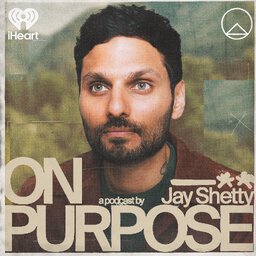8 Proven Ways to Get Out of a Creative Block & Find Your Flow
Have you ever wondered why our schools don't focus much on nurturing our creative sides?
What possibilities could have happened if we were given more time to explore our creativity?
Today, I am going to share with you some insights on why many of us don’t pursue our creative interests, the different ways to respark our creativity, and what we can do to hone our creativity despite our busy schedules.
It's a thought that's crossed many of our minds, and today, we're going to explore it together.
As we go along, you'll discover eight practical ways to reignite your creativity, and they're as fun as they are effective. From browsing a bookshop to asking thought-provoking questions, from giving your living space a creative twist to engaging your friends in the process, there's something here for everyone.
With this episode, learn how to break free and get those creative juices flowing. It's time to embrace your inner artist and find the inspiration you've been looking for.
In this episode, you'll learn:
How to develop creativity
Steps to be more creative
How to challenge yourself to be more productive
With Love and Gratitude,
Jay Shetty
What We Discuss:
00:00 Intro
01:28 Developing creativity is not prioritized in educational institutions
04:43 How Schools Kill Creativity
06:13 #1: Walk Into A Bookshop
11:34 #2: Asking Better Questions
14:52 #3: Imagine Solving a Real Live Problem in Your Mind
17:59 #4: Think About the Next Place You’re Traveling
20:22 #5: Play With Toys
21:29 #6: Ask Your Friends What You Can Do Next
23:42 #7: Redecorate More Intentionally
25:40 #8: Find Random Friends
 On Purpose with Jay Shetty
On Purpose with Jay Shetty


